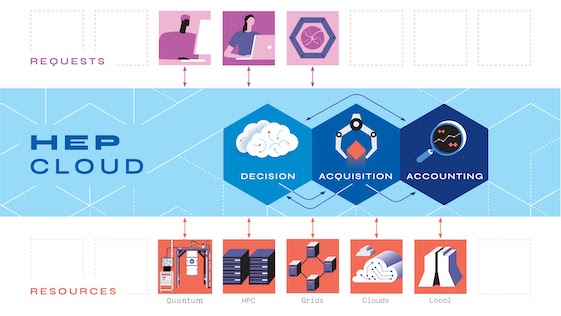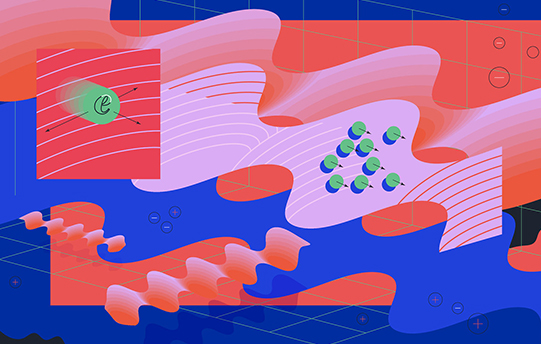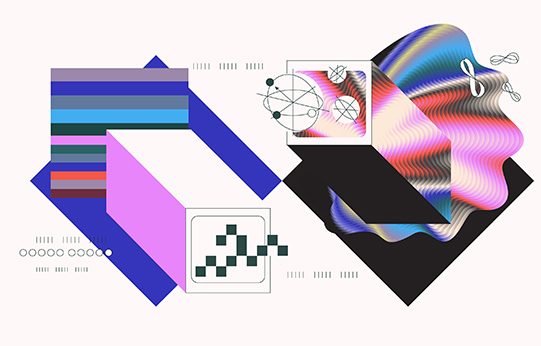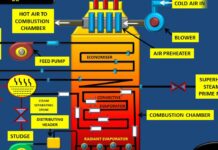Quantum optimization and machine learning
Quantum computation provides tools to solve two broad classes of optimization problems. Semi-definite programming (SDP) and constraint satisfaction problems (CSPs). SDP finds a number of applications in machine learning. New problems related with machine learning require more efficient optimization algorithms to handle big data.
HEP applications

Fermi lab researchers are looking into ways to use existing infrastructure to enable easy access to quantum machines. Fermi lab plans to interface Hep cloud, a Fermi lab system that manages heterogeneous computing resources, with quantum computers. This allows researchers to more easily submit and manage particle physics workflows using classical and quantum resources.
Theory applications

At Fermilab we have a very strong effort on quantum theory and applications. Quantum theory is the key to understanding everything we are doing in the science and technology of quantum.
The quantum computer is a good abstract model for capturing all information processing that nature allows, including those at the most fundamental level — subatomic particles and forces. They aim to leverage Fermi lab’s expertise in lattice QCD computations to inform and improve quantum simulation.
Quantum computation of fermion and boson systems
Fermi lab scientists are developing a way to use quantum computers to simulate some of the most basic interactions that hold our universe together. Recent advances in quantum hardware technology have initiated a new era in computing science. As quantum hardware has advanced, the development of quantum algorithms has become an area of intensive research.
Resources required, optimized fermion algorithms are very promising for near-future quantum simulations. purely fermionic models preclude the simulation of physically important theories with bosonic degrees of this paper we extend the existing fermion algorithms to include bosons, opening up the possibility for quantum simulation to whole new classes of physical systems.
simulation of relativistic field theories is as an important goal for high energy physics, we consider this approach as a first step towards that direction. the literature contains fewer discussions on representing bosons on gate quantum computers.
Scientists have already made strides in modeling systems made of fermions using quantum algorithms. It’s been more difficult to achieve this for boson systems. They are representing the boson system as a system of harmonic oscillators.
Large-scale simulations of quantum systems on high-performance computing

High-performance computing (HPC) has historically taken advantage of new processing paradigms by leveraging special purpose accelerators more recent vector processors capable of single-instruction multiple-data (SIMD) parallelization. A primary motivation for This approach isolates the need for program or algorithm refactoring to those workloads specific to the hardware accelerator. Current limitations on processor frequency, communication bandwidth, physical scale, energy consumption, and hardware reliability make it advantageous for HPC designers .
QPU INTEGRATION STRATEGIES
The simplified CPU-QPU execution model presented in Sec. 2 offers a variety of different integration strategies for the development of large-scale hybrid computing systems. A significant obstacle to integration is the physical hardware requirements of
current experimental quantum computing devices. Many technologies that could be
used to realize a fully functional QPU currently require bulky and costly infrastructure. This includes the use of dilution refrigerators to suppress thermal noise, electromagnetic shielding to avert ambient energy, and ultra-high vacuum enclosures to
prevent device contamination.
We anticipate that QPU requirements will ease with future device development and refined engineering principles. In the loose integration path, QPUs remain as isolated operational elements that must interact with a host HPC system using a network interface. This is effectively a client-server model a where the quantum computing (QC) server





